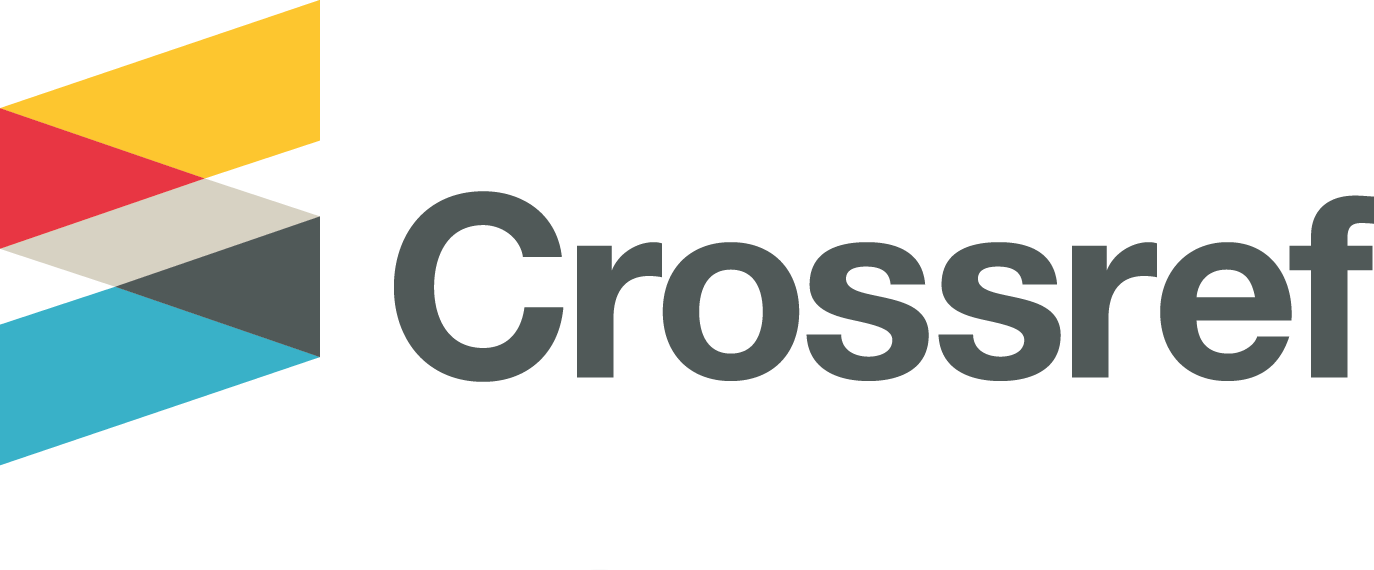Self-Esteem and Life Satisfaction Among Adolescents in Semarang: Communication with Peers as a Mediator
Abstract
The decline in life satisfaction during adolescence is a significant concern due to its negative effects on psychological well-being and development. Factors contributing to life satisfaction include self-esteem and communication with peers. This study aimed to examine the relationship between self-esteem and life satisfaction among adolescents in Semarang, with communication with peers as a mediating variable. The proposed hypothesis was that communication with peers mediates the relationship between self-esteem and life satisfaction. The population of this study includes students who are actively attending junior high schools in Semarang. A quantitative approach with a simple mediation design was used. Data were collected from 296 participants using three instruments: the Rosenberg Self-Esteem Scale, the Satisfaction with Life Scale–Children (SWLS-C), and the Adolescent Peer Communication Scale. Data were analyzed using Structural Equation Modeling (SEM). The results showed a positive and significant relationship between self-esteem and life satisfaction, mediated by communication with peers (coefficient = 0.019; 95% CI [0.008–0.029]). These findings highlight the important role of peer communication in mediating the relationship between self-esteem and life satisfaction in adolescents. This underscores the importance of developing peer communication skills as a strategy to enhance adolescents’ life satisfaction.
Penurunan life satisfaction selama masa remaja merupakan masalah penting yang dapat berdampak negatif pada kesejahteraan psikologis dan perkembangan remaja. Beberapa faktor yang berkontribusi terhadap life satisfaction adalah self-esteem dan communication with peers. Penelitian ini bertujuan untuk mengetahui hubungan antara self-esteem dan life satisfaction pada remaja di Kota Semarang yang dimediasi oleh communication with peers. Adapun hipotesis dalam penelitian ini adalah terdapat hubungan antara self-esteem dan life satisfaction pada remaja di Semarang yang dimediasi oleh communication with peers. Populasi penelitian meliputi siswa yang aktif bersekolah di tingkat Sekolah Menengah Pertama di Kota Semarang. Pendekatan kuantitatif dengan desain mediasi sederhana digunakan dalam penelitian ini. Data dikumpulkan dari 296 partisipan menggunakan tiga instrumen, yaitu Rosenberg Self-Esteem Scale, Satisfaction with Life Scale–Children (SWLS-C), dan skala Adolescent Peer Communication. Analisis data dilakukan dengan metode Structural Equation Modelling (SEM). Hasil menunjukkan bahwa terdapat hubungan positif dan signifikan antara self-esteem dan life satisfaction yang dimediasi oleh communication with peers (koefisien = 0,019; 95% CI [0,008–0,029]). Hasil penelitian ini menegaskan peran penting communication with peers dalam memediasi hubungan antara self-esteem dan life satisfaction remaja. Temuan ini menggarisbawahi pentingnya pengembangan keterampilan komunikasi antar teman sebaya sebagai strategi untuk meningkatkan kepuasan hidup remaja.
Keywords
Full Text:
FULL TEXTReferences
Abbas, N., Azizah, A., & Kusumawati, R. (2024). Peran Keluarga dan Teman Sebaya dalam Membentuk Identitas Sosial. Jurnal Sosial Politik Humaniora, 1, 24.
Alsarrani, A., Hunter, R. F., Dunne, L., & Garcia, L. (2022). Association between friendship quality and subjective wellbeing among adolescents: a systematic review. BMC Public Health, 22(1), 1–37. https://doi.org/10.1186/s12889-022-14776-4
Astuti, M., Herlina, Anggreini, S., Husnah, A., Fery, G. I., Safira, I., & Meilani, S. (2024). Dampak Lingkaran (Circle) Pertemanan Terhadap Moral dan Karakteristik Mahasiswa. Indo-MathEdu Intellectuals Journal, 5(2), 1369–1383. https://doi.org/10.54373/imeij.v5i2.582
Aymerich, M., Cladellas, R., Castelló, A., Casas, F., & Cunill, M. (2005). The Evolution of Life Satisfaction Throughout Childhood and Adolescence: Differences in Young People’s Evaluations According to Age and Gender. Child Indicators Research, 14(4), 2347–2369. https://doi.org/10.1007/s12187-021-09846-9
Azwar, S. (2021). Penyusunan Skala Psikologi (3rd ed.). Pustaka Pelajar.
Bacro, F., Coudronnière, C., Gaudonville, T., Galharret, J. M., Ferrière, S., Florin, A., & Guimard, P. (2020). The French adaptation of the Satisfaction with Life Scale (SWLS): Factorial structure, age, gender and time-related invariance in children and adolescents. European Journal of Developmental Psychology, 17(2), 307–316. https://doi.org/10.1080/17405629.2019.1680359
Busubul, S. N., Abidin, F. A., & Qodariah, L. (2023). Adaptation of The Satisfaction with Life Scale – Children (Swls-C) For Children And Adolescents: Indonesian Version. Roczniki Psychologiczne, 26(3), 195–213. https://doi.org/10.18290/RPSYCH2023.0016
Cava, M. J., Buelga, S., & Musitu, G. (2014). Parental communication and life satisfaction in adolescence. In Spanish Journal of Psychology (Vol. 17, pp. 1–8). Cambridge University Press. https://doi.org/10.1017/sjp.2014.107
Dias-Viana, J. L., & Noronha, A. P. P. (2022). Life Satisfaction, Affects at School and Depression Symptoms among Adolescents. Paideia, 32, 1–10. https://doi.org/10.1590/1982-4327e3203
Diener, E., Emmons, R. A., Larsem, R. J., & Griffin, S. (1985). The Satisfaction With Life Scale. Journal of Personality Assessment, 49(1), 71–75. https://doi.org/10.1207/s15327752jpa4901_13
Eroğlu, F. O., Aktepe, Evrim., & Erturan, İ. (2018). The evaluation of psychiatric comorbidity, self-injurious behavior, suicide probability, and other associated psychiatric factors (lonileness, self-esteem, life satisfaction) in adolescents with acne: A clinical pilot study. Journal of Cosmetic Dermatology, 18(3), 916–921. https://doi.org/10.1111/jocd.12708
Gadermann, A. M. (2009). The Satisfaction with Life Scale Adapted for Children: Investigating The Structural, External, and Substantive Aspects of Construct Validity. https://open.library.ubc.ca/collections/ubctheses/24/items/1.0054573.
Huang, J. Y., Wang, K. Y., & Ringel-Kulka, T. (2015). Predictors of life satisfaction among Asian American adolescents- analysis of add health data. SpringerPlus, 4(216). https://doi.org/10.1186/s40064-015-1008-5
Ismah, F. A., & Widayat, I. W. (2023). The Effectiveness of Using Self Instruction in Increasing Low Self-Esteem in Late Adolescence. Psikoborneo: Jurnal Imiah Psikologi, 11(4), 583–591. https://doi.org/10.30872/psikoborneo.v11i4
Kekkonen, V., Kraav, S.-L., & Tolmunen, T. (2020). Predictors of Life Satisfaction In Adolescence and from Childhood to Young Adulthood.
Khristi, T. C., & Kurniawan, A. (2024). Quality of Friendship on Identity Formation in Adolescents in Surabaya. Psikoborneo: Jurnal Imiah Psikologi, 12, 24–28. https://doi.org/10.30872/psikoborneo.v12i1
Kurniati, F. D., & Kusumasari, V. R. (2021). Hubungan Gangguan Emosional dan Perilaku dengan Kepuasan Hidup Remaja di Segoroyoso, Pleret, Bantul, Yogyakarta. Medika Respati : Jurnal Ilmiah Kesehatan, 16(1), 49–56. https://doi.org/10.35842/mr.v16i1.353.
Latandi, G. (2022). Hubungan Antara Kepercayaan Diri dan Harga Diri dengan Keterampilan Komunikasi Interpersonal pada Siswa Kelas X SMA Negeri 5 Tana Toraja. PINISI: Journal of Education, 1, 1–13.
Lee, I. H., Sovet, L., Banda, K., Kang, D. K., & Park, J. H. (2021). Factor structure and factorial invariance of the Career Adapt-Abilities Scale across Japanese and South Korean college students. International Journal for Educational and Vocational Guidance, 21(2), 241–262. https://doi.org/10.1007/s10775-020-09440-5
Leme, V. B. R., Del Prette, Z. A. P., & Coimbra, S. (2015). Social skills, social support and well-being in adolescents of different family configurations. Paideia, 25(60), 9–18. https://doi.org/10.1590/1982-43272560201503
Moksnes, U. K., Løhre, A., Lillefjell, M., Byrne, D. G., & Haugan, G. (2014). The Association Between School Stress, Life Satisfaction and Depressive Symptoms in Adolescents: Life Satisfaction as a Potential Mediator. Social Indicators Research, 125(1), 339–357. https://doi.org/10.1007/s11205-014-0842-0
Myers, D. G. (2012). Exploring social psychology (D. G. Myers, Ed.; 6th ed.). The McGraw-Hill Companies.
Napora, E., Cabanová, V., & Kolaríková, M. (2023). Certain predictors of coping with stress in adolescents. Health Psychology Report, 11(1), 48–58. https://doi.org/10.5114/hpr/152330
OECD. (2024, March 9). “Life Satisfcaction”, in Society at a Glance 2024: OECD Social Indicator. OECD. https://doi.org/10.1787/9870c393-en
Orben, A., Lucas, R. E., Fuhrmann, D., & Kievit, R. A. (2022). Trajectories of adolescent life satisfaction. Royal Society Open Science, 9(8). https://doi.org/10.1098/rsos.211808
Orth, U., & Robins, R. W. (2022). Is High Self-Esteem Beneficial? Revisiting a Classic Question. American Psychologist, 77(1), 5–17. https://doi.org/10.1037/amp0000922
Pérez-Fuentes, M. D. C., Jurado, M. D. M. M., Linares, J. J. G., Ruiz, N. F. O., Márquez, M. D. M. S., & Saracostti, M. (2019). Parenting practices, life satisfaction, and the role of self-esteem in adolescents. International Journal of Environmental Research and Public Health, 16(4045), 1–15. https://doi.org/10.3390/ijerph16204045
Radhika. (2024). Effect of Self-esteem on Life Satisfaction Among Adolescents. EPRA International Journal of Multidisciplinary Research, 10, 655–659. https://doi.org/10.36713/epra2013.
Raharja, B. N., & Indati, A. (2019). Hubungan antara Kebijaksanaan dengan Kepuasan Hidup pada Remaja. Gadjah Mada Journal of Psychology (GamaJoP), 4(2), 96. https://doi.org/10.22146/gamajop.46354
Rahmania, F. A., & Sari, E. P. (2024). Self-Esteem, Positive Experience, Negative Experience, and Life Satisfaction University Students. Jurnal Psikologi Teori Dan Terapan, 15(3), 256–262. https://doi.org/10.26740/jptt.v15n03.p256-262
Rosenberg, M. (1965). Society and the Adolescent Self-Image (M. Rosenberg, Ed.). Princenton University Press.
Sagita, S., Rifayanti, R., & Rasyid, M. (2022). Interaksi Sosial Dengan Kesepian Pada Remaja Panti Asuhan. Psikoborneo: Jurnal Imiah Psikologi, 10(2), 252–259. https://doi.org/10.30872/psikoborneo
Sampthirao, P. (2016). Self-Concept and Interpersonal Communication. The International Journal of Indian Psychology, 3(6), 177–189. https://doi.org/10.25215/0303.115.
Sari, M. P., & Fitri, S. (2024). Sebuah Review Tentang Kepuasan Hidup Remaja Indonesia. G-Couns: Jurnal Bimbingan Dan Konseling, 9(1), 518–527. https://doi.org/10.31316/gcouns.v9i1.5943
Saxena, S. (2021). Loneliness, Self-Esteem and Life Satisfaction in Young Adulthood. The International Journal of Indian Psychology, 9(4), 698–717. https://doi.org/10.25215/0904.069
Sirajuddin, K. K., Ahmad, & Siswanti, Di. N. (2023). Hubungan Harga Diri Dengan Kepuasan Hidup Generasi Z Pengguna Media Sosial Instagram. PESHUM: Jurnal Pendidikan, Sosial Dan Humaniora, 2(2), 255–265. https://doi.org/10.56799/peshum.v2i2.1390.
Sugiyono. (2023). Metode Penelitian Kuantitatif (Sugiyono, Ed.). Alfabeta.
Supratiknya, A. (2003). Komunikasi Antarpribadi: Tinjauan Psikologis (A. Supratiknya, Ed.; 8th ed.). Kanisius.
Szcześniak, M., Bajkowska, I., Czaprowska, A., & Sileńska, A. (2022). Adolescents’ Self-Esteem and Life Satisfaction: Communication with Peers as a Mediator. International Journal of Environmental Research and Public Health, 19(3777), 1–13. https://doi.org/10.3390/ijerph19073777
Wahyuni, E., & Maulida, I. (2019). Hubungan Antara Kepuasan Hidup dan Kesejahteraan Psikologis pada Siswa SMA Negeri Se-Jakarta Pusat. Insight: Jurnal Bimbingan Dan Konseling, 8(2), 173–180. https://doi.org/10.21009/INSIGHT.082.08.
Yunita, R., & Sarajar, D. K. (2024). Improving Learning Achievement Through a Self-Esteem Perspective: The Secret to Student Success. Psikoborneo: Jurnal Imiah Psikologi, 12(3), 326–332. https://doi.org/10.30872/psikoborneo.v12i3
DOI: http://dx.doi.org/10.30872/psikoborneo.v13i4.20645
Refbacks
- There are currently no refbacks.
Copyright (c) 2025 Arneta Nadila Kusuma, Endang Widyorini

This work is licensed under a Creative Commons Attribution-ShareAlike 4.0 International License.
PSIKOBORNEO: Jurnal Ilmiah Psikologi Published by Faculty of Social and Political Siences, University of Mulawarman, Samarinda, East Kalimantan and This work is licensed under a Creative Commons Attribution-ShareAlike 4.0 International License.
________________________________________
PSIKOBORNEO: Jurnal Ilmiah Psikologi
Department of Psychology
Faculty of Social and Political Siences, University of Mulawarman
Jl. Muara Muntai Kampus Gn. Kelua Samarinda 75411
Phone: +62 813 35350368
E-Mail: psikoborneo@gmail.com / psikoborneo@fisip.unmul.ac.id
















